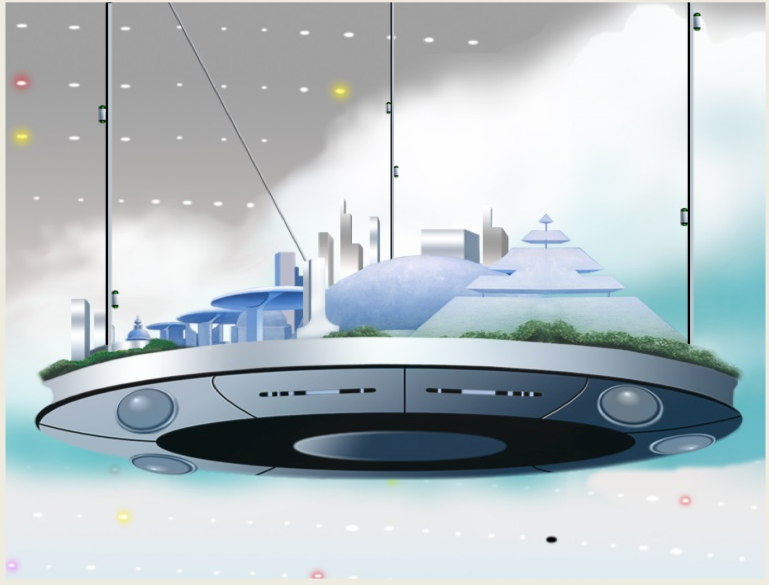
Incredible Technology: How to Use 'Shells' to Terraform a Planet

Editor's Note: In this weekly series, SPACE.com explores how technology drives space exploration and discovery.
One day, humans could re-make a world in Earth's image.
Engineering an inhospitable world into a livable one, a process known as terraforming, could be a successful way to colonize another world after a long, interstellar journey, said Ken Roy, an engineer and presenter at last week's Starship Congress in Dallas, Tex.
Roy's terraforming vision hinges upon what he calls "shell worlds." Upon arrival at an ideal planet, humans would literally encase the alien world inside of a protective shell made from Kevlar, dirt and steel. [Shell-Worlds: How Humanity Could Terraform Small Planets (Infographic )]
"We have a central world. We put an atmosphere on it," Roy said. We can have the "composition, temperature, pressure of our choosing. Let's assume we want 'Earth-normal,' and we put a shell around the central world to contain this atmosphere. The atmosphere then exists between the shell and the central world. The outer part of the shell is essentially a vacuum."
While the planet's gravity would remain unchanged, the rest of the world could be made very similar to Earth after importing vital materials, Roy said. The new world could even have some benefits not afforded on Earth, such as:
- Industry and facilities that could benefit from access to a vacuum could use a port that connects to the outside of the shell.
- Ultraviolet radiation from a star would not be a problem since the world would be fully encased in the shell.
- The heating, cooling and the length of a day on the world would not be dependent upon the orbit of the planet around a star.
- The shell would provide radiation protection.
- The world would provide an almost limitless playground for design. For example, cities could hang down from the interior of the shell.
A small planetary body like Mars or even Pluto would be a great candidate for the shell world treatment, Roy said.
Breaking space news, the latest updates on rocket launches, skywatching events and more!
Martian gravity is about one third that of Earth's, and the surface area of the Red Planet is equal to the land area of Earth. Mars has no magnetic field; plate tectonics seem to be non-existent, and the planet's core is frozen, Roy said.
While all of these factors might seem to add up into an inhospitable world, they actually make a Martian-type planet a great candidate for shelling.
"That is not a bad thing," Roy said. "It means you don’t have to deal with volcanoes and earthquakes. I'd say that's a good thing."
Roy admits that these kinds of worlds wouldn't be perfect. The creation of a habitable shell world would be an intensive process; large amounts of nitrogen and water would need to be imported or produced on the planet, and the construction of a shell itself would be a vast undertaking. But it might be preferable to other ways of terraforming, he said.
Traditional terraforming methods used on a Mars-like body would require mirrors that reflect sunlight down onto the planet's surface, simulating a greenhouse effect for a small planet.
If the world's manufactured atmosphere is designed to provide Earth-like conditions on the surface of the traditionally terraformed home, then engineers would need the equivalent of about half of the mass of the Earth's atmosphere imported to Mars, Roy said. That atmosphere would also bleed off into space eventually.
A Mars-sized shell world would only require about 6.6 percent of the mass of Earth's atmosphere, a much more manageable amount of material.
Shells could provide the next step once humans actually reached a Mars-sized planet orbiting another star, Roy said.
"Getting [to another star] is half the battle, but you also have to give thought to what you do once you get there," he said. "One of the objectives of travelling to another star … is colonization. It's unlikely that once we get to an alien star system, we'll find a world that we can move into."
Follow Miriam Kramer @mirikramer and Google+. Follow us @Spacedotcom, Facebook and Google+. Original article on SPACE.com.

Miriam Kramer joined Space.com as a Staff Writer in December 2012. Since then, she has floated in weightlessness on a zero-gravity flight, felt the pull of 4-Gs in a trainer aircraft and watched rockets soar into space from Florida and Virginia. She also served as Space.com's lead space entertainment reporter, and enjoys all aspects of space news, astronomy and commercial spaceflight. Miriam has also presented space stories during live interviews with Fox News and other TV and radio outlets. She originally hails from Knoxville, Tennessee where she and her family would take trips to dark spots on the outskirts of town to watch meteor showers every year. She loves to travel and one day hopes to see the northern lights in person. Miriam is currently a space reporter with Axios, writing the Axios Space newsletter. You can follow Miriam on Twitter.

